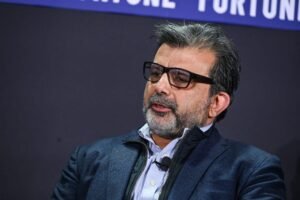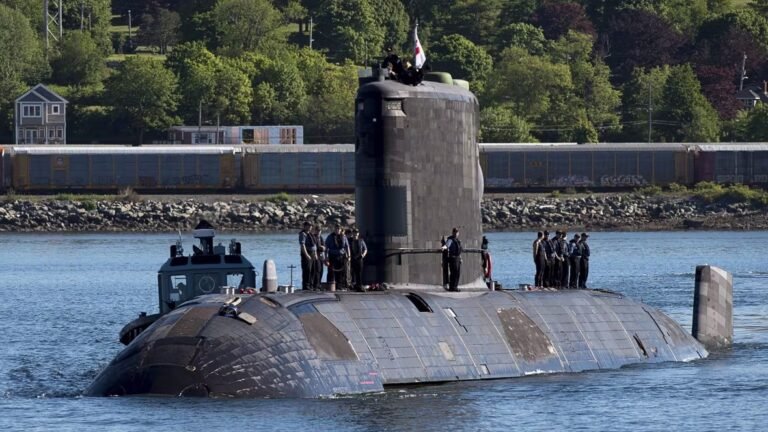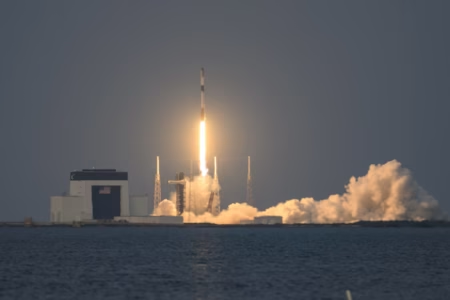The competition for the Canadian submarine contract is intensifying as South Korea’s Hanwha Oceans promises wide-ranging industrial investments to strengthen its bid. The company, one of two finalists selected to build the Royal Canadian Navy’s next fleet of submarines, is pledging partnerships that could extend into lithium-ion battery production, liquefied natural gas, aerospace, steel, critical minerals mining, and sustainable energy. While the details of the plan remain confidential, Hanwha insists that the commitments will be substantial and tailored to Canada’s long-term economic interests.
Michael Coulter, CEO of Hanwha Global Defense, said the proposal is designed to go beyond naval construction. He explained that the Canadian government is seeking more than just submarines, but also lasting industrial capacity within its borders. “We know there’s a requirement in the Canadian military for howitzers,” he said, adding that Hanwha is positioning itself to contribute in multiple areas, including energy partnerships and vehicle manufacturing.
The company points to its recent experience in Australia as a model. A year ago, Hanwha opened an armored vehicle plant in Geelong, employing about 1,000 workers to build fighting vehicles and self-propelled howitzers. It envisions something similar in Canada, with plans that could include two submarine sustainment facilities on each coast and a domestic plant for tanks, rockets, and resupply vehicles. Coulter emphasized that a submarine program represents a decades-long commitment, with life-cycle support and maintenance requiring a continuous presence in the host country. “We want the entire life cycle operated in Canada by Canadians,” he said.
This week, a Canadian delegation led by Deputy Defence Minister Stefanie Beck visited Hanwha’s Geoje shipyard in South Korea, where the company is promoting its KSS-III submarine model. Prime Minister Mark Carney is expected to tour the same site next month, following his August visit to a German submarine facility in Kiel, owned by rival bidder ThyssenKrupp Marine Systems (TKMS).
Hanwha is emphasizing its ability to meet Canada’s urgent timelines. The navy’s four Victoria Class submarines are nearing the end of their service life, with only one currently operational. Ottawa has set a target for the first new submarine to be delivered by 2035. Hanwha says it can meet that goal by delivering four KSS-III subs by 2035, starting in 2032, and then expanding Canada’s fleet to 12 submarines by 2043. The company estimates the cost of the program at between $20 and $24 billion, excluding infrastructure, and argues that early retirement of the Victoria class could save Canada up to $1 billion in repairs.
The company’s main competition, TKMS, is promoting its 212CD submarine, which has already been ordered by Germany and Norway. The German firm highlights its track record, having built about 70 percent of NATO’s conventional submarine fleet, and stresses interoperability with allied navies as a key advantage. Supporters of TKMS point to Canada’s recent decision to purchase F-35 fighter jets, noting that compatibility with allies was a decisive factor. TKMS also argues it can meet the 2035 deadline and emphasizes its long-standing reliability.
Hanwha’s campaign reflects South Korea’s broader ambition to expand its defense exports. The country was the world’s eighth-largest arms exporter in 2023 and is aiming to reach fourth place by 2027, behind the United States, France, and Russia. Successive governments in Seoul have supported this goal with flexible joint production agreements, bundled military and civilian packages, and strong diplomatic backing. Hanwha, which is South Korea’s seventh-largest business group, has been a regular exhibitor at Canada’s CANSEC defense expo in Ottawa and has aggressively marketed its submarine program for years.
The Canadian government is moving quickly on the procurement. The program was only announced a year ago, yet the field has already been narrowed to two contenders. Naval Commander Admiral Angus Topshee recently suggested that Ottawa could reach a decision before the end of the year, an unusually rapid pace for a major defense acquisition. “It appears that the government is intent on moving quickly and differently,” Coulter said. “We’re in uncharted waters, so our approach is to stay close to the customer, understand their priorities, and commit to meeting them.”







